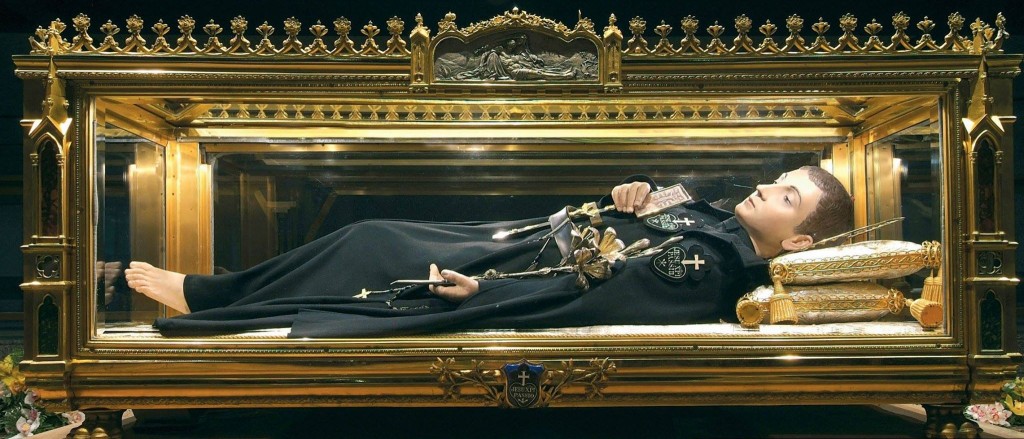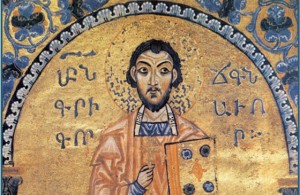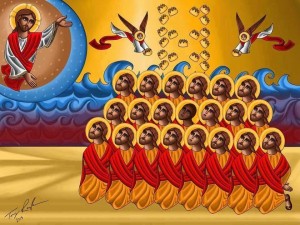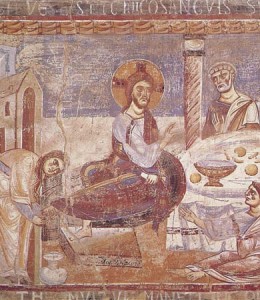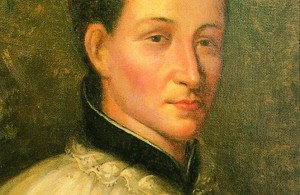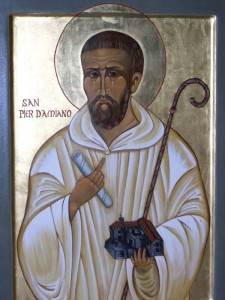 Today is the feast of a great Benedictine monk, bishop and cardinal of the Church. The Mass prayer quotes the Rule of Benedict when it says “putting nothing before Christ” connecting the ministry of Peter with his “ardent in the service of your Church, we may be led to the joys of eternal light.” Peter was a great reformer of the monastic life and the Church. Given the state of the Church today in some places, we need another Peter Damian.
Today is the feast of a great Benedictine monk, bishop and cardinal of the Church. The Mass prayer quotes the Rule of Benedict when it says “putting nothing before Christ” connecting the ministry of Peter with his “ardent in the service of your Church, we may be led to the joys of eternal light.” Peter was a great reformer of the monastic life and the Church. Given the state of the Church today in some places, we need another Peter Damian.
Here is a portion of a letter by Saint Peter Damian:
“Let us rejoice in the joy that follows sadness”
You asked me to write you some words of consolation, my brother. Embittered by so many tribulations, you are seeking some comfort for your soul. You asked me to offer you some soothing suggestions.
But there is no need for me to write. Consolation is already within your reach, if your good sense has not been dulled. My son, come to the service of God. Stand in justice and fear. Prepare your soul; it is about to be tested. These words of Scripture show that you are a son of God and, as such, should take possession of your inheritance. What could be clearer than this exhortation?
Where there is justice as well as fear, adversity will surely test the spirit. But it is not the torment of a slave. Rather it is the discipline of a child by its parent.
Even in the midst of his many sufferings, the holy man Job could say: Whip me, crush me, cut me in slices! And he would always add: This at least would bring me relief, yet my persecutor does not spare me.
But for God’s chosen ones there is great comfort; the torment lasts but a short time. Then God bends down, cradles the fallen figure, whispers words of consolation. With hope in his heart, man picks himself up and walks again toward the glory of happiness in heaven.
Craftsmen exemplify this same practice. By hammering gold, the smith beats out the dross. The sculptor files metal to reveal a shining vein underneath. The potter’s furnace puts vessels to the test. And the fire of suffering tests the mettle of just men. The apostle James echoes this thought: Think it a great joy, dear brothers and sisters, when you stumble onto the many kinds of trials and tribulations.
When men suffer pain for the evil they have perpetrated in life, they should take some reassurance. They also know that for their good deeds undying rewards await them in the life to come.
Therefore, my brother, scorned as you are by men, lashed as it were by God, do not despair. Do not be depressed. Do not let your weakness make you impatient, Instead, let the serenity of your spirit shine through your face. Let the joy of your mind burst forth. Let words of thanks break from your lips.
The way that God deals with men can only be praised. He lashes them in this life to shield them from the eternal lash in the next. He pins people down now; at a later time he will raise them up. He cuts them before healing; he throws them down to raise them anew.
The Scriptures reassure us: let your understanding strengthen your patience. In serenity look forward to the joy that follows sadness. Hope leads you to that joy and love enkindles your zeal. The well-prepared mind forgets the suffering inflicted from without and glides eagerly to what it has contemplated within itself.
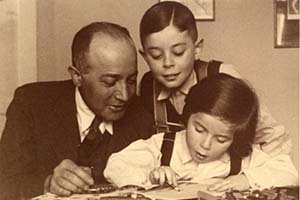 Archbishop Stanislav Zvolenský, archbishop of Bratislava, will preside at the ceremony of the closure of the diocesan process of the cause for beatification and sainthood of the Jesuit novice Tomáš Munk and his father František on April 20, 2015.
Archbishop Stanislav Zvolenský, archbishop of Bratislava, will preside at the ceremony of the closure of the diocesan process of the cause for beatification and sainthood of the Jesuit novice Tomáš Munk and his father František on April 20, 2015.